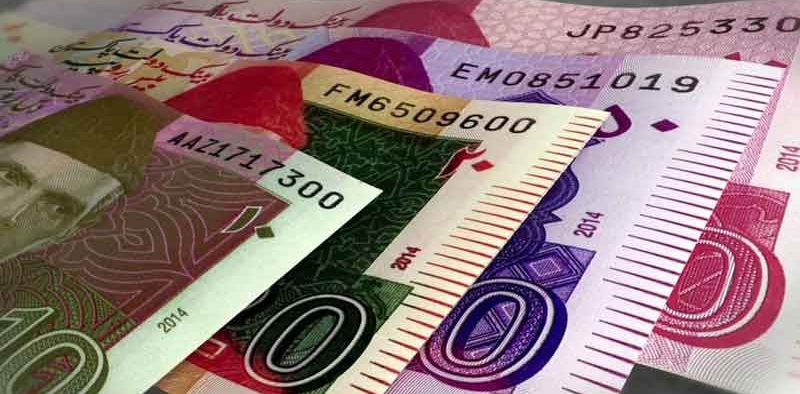Ministry identifies major threats to the Pakistani economy

Eight major fiscal risks—macroeconomic imbalances, growing debt, guarantees, climate degradation, losses in State Owned Enterprises (SOEs), risks associated with public-private partnerships, fiscal indiscipline in provincial governments, and governance issues—have been identified by the Ministry of Finance as having the potential to exacerbate Pakistan’s economic vulnerabilities.
The Ministry of Finance’s Fiscal Risk Statement (FRS) for 2023–24 said that a number of variables, including currency devaluation, rising oil and food costs globally, have contributed to Pakistan’s recent volatility in inflation. The devaluation of the Pakistani rupee has been substantial in recent times, owing to a multitude of risk factors including global economic conditions, trade imbalances, political instability, and external debt. By boosting the policy rate, the State Bank of Pakistan (SBP) is proactively addressing rising inflation. According to the FRS, the government is also concentrating on implementing efficient administrative, policy, and relief measures to reduce inflation and stabilize the economy.
There is now more risk to external stability and a worsening inflation forecast. The primary upward risk to the inflation projection is the uncertainty surrounding the future trajectory of energy price adjustments. On the other hand, a possible cooling off in global commodity prices could help lower inflation. In addition, medium-term price reductions would be made possible by increased interest rates, passing through the impact of rising energy prices, and adjustments to the currency rate. Given the decrease in mark-up payments, it would thereafter follow the expansionary monetary policy and improvement in fiscal space. Therefore, in the medium run, the stabilization measures implemented during the past year may have positive effects on the macroeconomy and the budget.
The administration intends to undertake policies like broadening the tax base, streamlining subsidies, and encouraging economic growth in order to lower the fiscal deficit. The difficulty of increasing debt servicing, however, may make it more difficult to reduce the fiscal deficit. To analyze fiscal risks, three scenarios (illustrating macroeconomic hazards) are simulated. In Scenario 1, the government’s responses to revenues, expenses, and the fiscal deficit are modeled and simulated in the context of low-cost financing options (a two percentage point reduction in the interest rate on external debt and a four percentage point reduction in the interest rate on domestic currency).
It is anticipated that government expenditures will eventually amount to 9.7% of GDP, the federal fiscal deficit will approach 3.0% of GDP, and net federal receipts will stay at 6.7% of GDP.
In contrast to baseline forecasts, scenario 2 explains in detail how revenues, expenses, and the fiscal deficit will react to a 50% decrease in non-tax revenues. Federal expenditures will stay at 10.6% of GDP, the federal budget deficit will rise to 5.4 percent of GDP, and net federal income would drop to 5.3 percent of GDP.
The third scenario illustrates how revenues, expenses, and the government fiscal deficit would respond in the event that the growth rate in the medium term stays 0.5 percent below the forecast rate annually. The federal budget deficit, federal spending, and net federal revenues will all stay at 4.1 percent, 11.0 percent, and 3.9 percent, respectively, by FY2026. Low non-tax revenue collections have a greater impact on the federal fiscal deficit than do declining interest payments or GDP.
The government’s overall public debt has surpassed the 60 percent GDP ceiling set by the FRDL Act throughout the past five years. This is mostly because of sustained budget deficits, which since 2010 have averaged 6% of GDP and have resulted in a sharp increase in debt. Both budgetary and non-budgetary reasons, such as the realization of contingent liabilities and unfavorable changes in interest and currency rates, can cause the debt to rise.
The government’s fiscal position may be vulnerable in the face of large current account deficits, insufficient foreign exchange reserves, and a declining exchange rate because external debt makes up 40.8% of total public debt. Large external payments combined with a lack of foreign exchange reserves have caused liquidity problems, unstable domestic interest rates, and exchange rate instability, which has increased the burden of external debts denominated in local currency.
Refinancing the government’s maturing debt is necessary when there is an ongoing fiscal deficit, and new debt must be raised to make up the difference. A high proportion of short-term debt makes refinancing more difficult, maybe very difficult, amid times of weaker economic growth, larger budget deficits, and/or decreased investor confidence. The government must attain and sustain a longer average time to maturity (ATM) for both its external and domestic debt in order to control the refinancing risk. This means that, in keeping with the present medium-term debt strategy, the government should issue debt with longer maturities, which will minimize the frequency of debt rollovers and the refinancing risk.
It is imperative to maintain a zero current account deficit prior to interest payments in order to guarantee a decrease in external debt to Foreign Exchange Earnings (FEE) over time. Additionally, FEE growth must be greater than the interest rate paid on external debt. Due to administrative actions taken by the government to reduce imports, the current account deficit significantly improved in the first three quarters of FY2023; nonetheless, repayment of short-term commercial debt is causing an increase in the amortization of external debt.
In FY2022, the stock of guarantees was equal to 4.5 percent of GDP. The reason for avoiding including guarantees given against commodity operations in the annual limits on new issuances is because the loans are effectively self-liquidating and backed by the underlying commodity. These assurances are given in relation to the commodities financing projects that TCP, Passco, and the local governments have undertaken.
At the end of June 2022, the outstanding stock of commodity operations was Rs1,134 billion. Due to problems like product theft, unpaid subsidies, and waste during storage, a sizable portion of commodity businesses lack underlying collateral, which presents a financial risk.
Pakistan is ranked among the top 10 nations most susceptible to the effects of climate change, according to the German watch organization’s 2021 Global Climate Risk Index. Pakistan will be vulnerable to more severe, frequent, and prolonged droughts due to the expected considerable increase in the number of days per year with a heat index more than 35°C, and the melting of the Himalayan glaciers will be a serious danger. 33 glacial lakes are already known to be vulnerable to dangerous glacial lake outburst floods (GLOF), which might endanger millions of people, according to the Ministry of Climate Change. Furthermore, according to the Climate Vulnerability Monitor, Pakistan is the 12th most vulnerable country in the world to climate change, underscoring the urgency of the FRS.

I am a dedicated student currently in my seventh semester, pursuing a degree in International Relations. Alongside my academic pursuits, I am actively engaged in the professional field as a content writer at the Rangeinn website.








